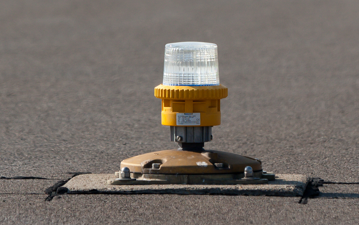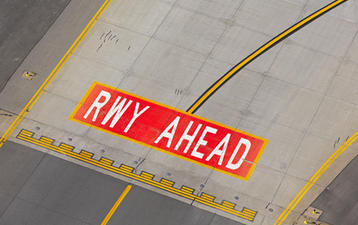Taxiway System Review
The airport manoeuvring area (runway, taxiways and aprons) should – by design – ensure clear guidance between aircraft to prevent possible confusion that may lead to disruption or worse, to a collision.
In the past few years, many occurrences have been recorded related to “failure to comply” by aircraft or other vehicles. Common events of this category are for instance confusion between runway and taxiway, incorrect use of a taxiway, failure to stop at a taxiway or runway holding point, deviation from the taxiway centreline or failure to follow guidance.
This especially apply not only to large and complex international aerodromes – notably with crossing runways or runways used as taxiways, but also to medium and small aerodromes with an often historically grown outdated layout and resulting complex geometries.
The analysis of these accident reveals that many taxiway accidents may preventable, amongst other means, by an optimised taxiway system optimisation. This include the taxiway geometry and associated clear signs, markings and lights, the taxiway designation and naming conventions, routings and possibly equipment and aeronautical information publication.
Critical review of taxiway systems
The periodic review of the taxiway system and its operations, together with all users, can enable airport operators to identify cost-effective solutions to local hazards. Such review is an essential part of the basic principle of an airport safety management system – and not only triggered by incidents or accident.
Many airports turn to airsight to conduct such independent critical review of their taxiway systems, as airsight is probably the world’s leader in this field.
What differentiate airsight from classical airport planners, is that our focus is on operations – and not only on design and compliance.
airsight developed a unique methodology for visualizing in both 2D and 3D all routings, and for later qualitatively ranking individual routing scenarios in terms of safety and complexity. This safety-based evaluation is performed by airsight multi-disciplinary team (pilots, air-traffic controllers, human-factors specialists, civil and aeronautical engineers) in parallel to workshops with airport users.
What is a good taxi routing?
For the review of each scenario, a list of pre-defined criteria is used. For instance, for the evaluation of a taxi routing, the following criteria are used:
- Complexity of ATC Instructions (length of ATC instructions, contents of ATC instructions, number of frequency changes)
- Complexity of routes (standard/Commonly used taxi routes available, number of taxiways, number of restrictions, number of runway crossings, runway taxiing required)
- Runway crossing / Runway safeguarding (division of controlled area between controllers (GND, TWR, apron) and resulting handover points / frequency changes
- Separation of routings (taxiways used for inbound and outbound traffic at the same time, taxi routes interfered by departure queues)
- Consistency (number of routing changes within a taxi route)
Example on Aeronautical Information Publication (AIP)
Pilots relies on charts for getting familiar with an airport taxiway system and to navigate from to or from the runway.
While the official version of an AIP is published by the state’s official services (AIS), most aircraft operators are using charts produced by external service provider, such as Lufthansa LIDO, Jeppesen, or NAVCHART. These charts often interpret with their own methodology the official versions. In general, each has positive and negative aspects that may lead to confusion: for instance, while an airport AIP may provide a dedicated chart for a “Hot Spot” (HS), an external service provider may omit it. Similarly, now that most charts are produced automatically, some taxiway lines may not be fully correct.
The importance of the review of these publications is often underestimated by many airport operators.
COVID-19 – the opportunity to rethink your airside assets?
In the past two decades, the rapid expansion of airport infrastructure often led to many inconsistencies in the taxiway system - and consequently an increased complexity. The relative low period of traffic during COVID-19 pandemic may be a good opportunity to rethink and optimise some aspect of many airfields manoeuvring areas!
Contact our airport operations department if you need external assistance related to optimising your airside assets!
Key Facts



